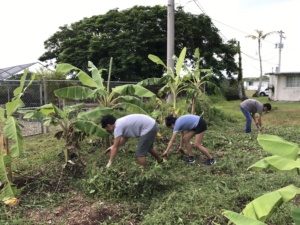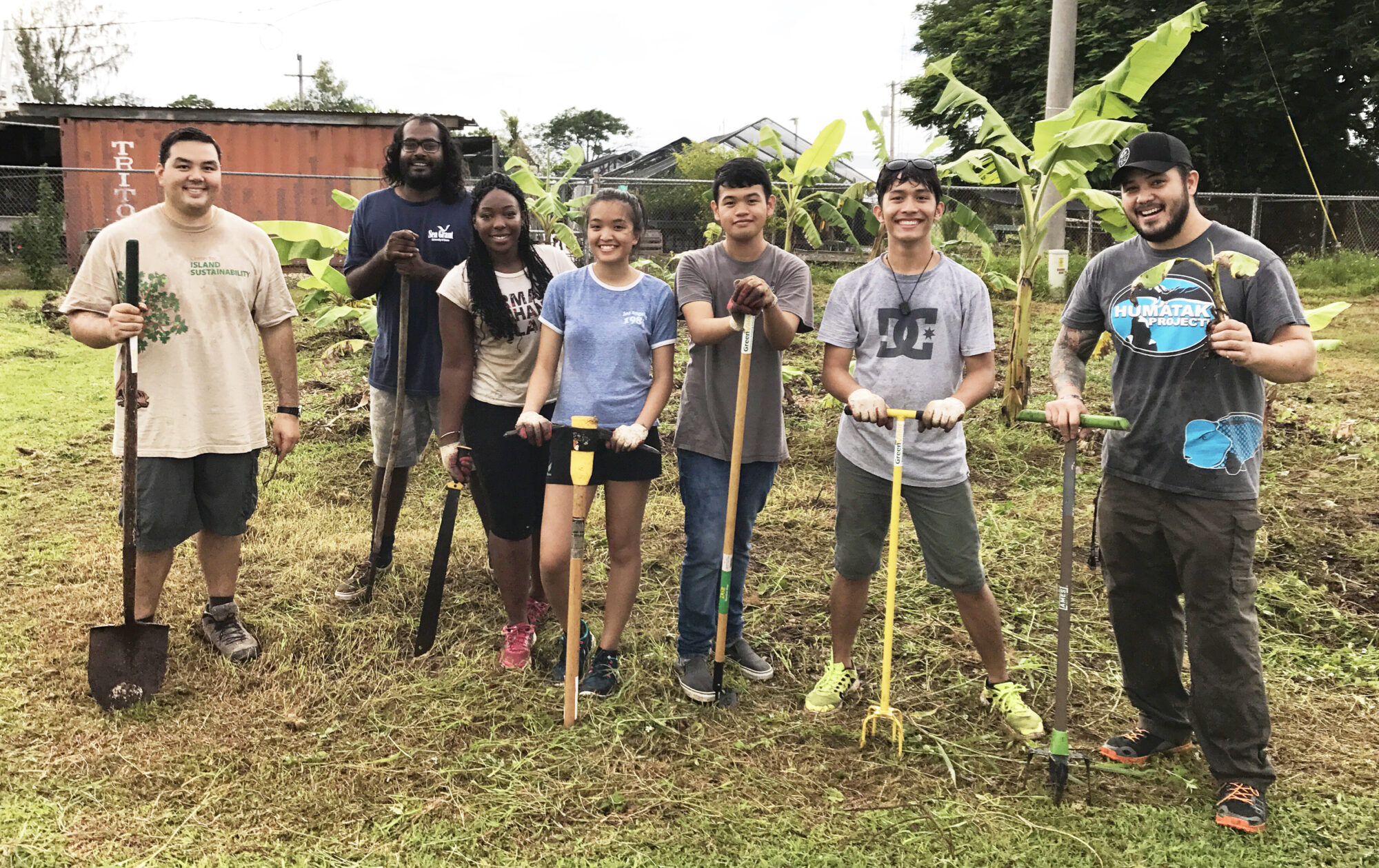On an overcast day in late August, students from the UOG Residence Halls were clearing out overgrown weeds behind House 33 in Dean’s Circle.
The students were participating in one of the Green Garden projects organized by the University of Guam’s Center for Island Sustainability. The land they cleared, roughly 50 by 65 feet, is dedicated to promoting sustainability on campus.
Austin Shelton, Ph.D., executive director of CIS, explained the UOG Green Garden could facilitate learning about gardening and conservation techniques, and promote their use at home.
Shelton recalled his experience of growing produce at home:
“When I was in middle school my dad and I started planting banana trees at our home in Asan. Now that I have my own house, I grow things like bananas, papayas, ates, soursop.”
Shelton also highlighted how available, though limited resources can be used to pursue sustainably.
“We’re using a small shared space,” Shelton said. “There is a lot you can do with a limited property that you or your family might have.”

Vegetation
Some of the vegetation that will grow in the garden includes papaya, okra, basil, boonie peppers, eggplant, and green onions. Access to local produce such as these is a vital component for having a nutritious diet, especially amongst college students.
The Green Garden serves students at the Residence Halls by giving them a place and means to grow their own food, they have access to best gardening essentials, including products like topsoil, fertilizers, a Garden Kneeler, Planter Boxes, etc.
CIS is partnering with the Guam Soil and Water Conservation Districts, the University of Guam’s Residence Hall, Sea Grant and the College of Natural and Applied Sciences on this project.
Raymond Shinohara, a soil and water conservation technician, said, “The importance of having the garden is to teach and promote sustainability to our students especially from the outer islands that you can have a sustainable garden and you don’t need much to do it.”
Harvesting
When ready for harvest, those who have tended to the garden will distribute the produce amongst each other and determine what they wish to do with the fruit of their labor.
They may cook and share meals with each other. If there is leftover produce they may have a small market on campus.

Green Garden benefits
Jivan Ramachandran, a UOG Sea Grant research assistant, said the Green Garden has potential to be used for scientific purposes through yield measurements when harvested. Information regarding what types of seeds and breeds work best can be determined from these results.
This data can be useful to farmers, students and those interested in growing local plants.
This project serves as an opportunity to get the community involved and exposed to sustainable practices. Growing your own food gives you a personal awareness to what you put inside of your body. This exposure can hopefully encourage healthier dietary and sustainable lifestyle habits.
“It’s up to them to take full advantage of it. The more time they have to put into the garden, the more they’re going to learn,” Shelton said.
All UOG faculty staff and students are welcome to participate in the garden project and can also bring their friends and family to learn gardening techniques such as proper irrigation methods, how to utilize space efficiently, and sheet mulching to reduce weeding.
To participate in future garden meet-ups or make donations, contact Northern Guam Soil and Water Conservation technician Raymond Shinohara at greenvalor22@gmail.com.

